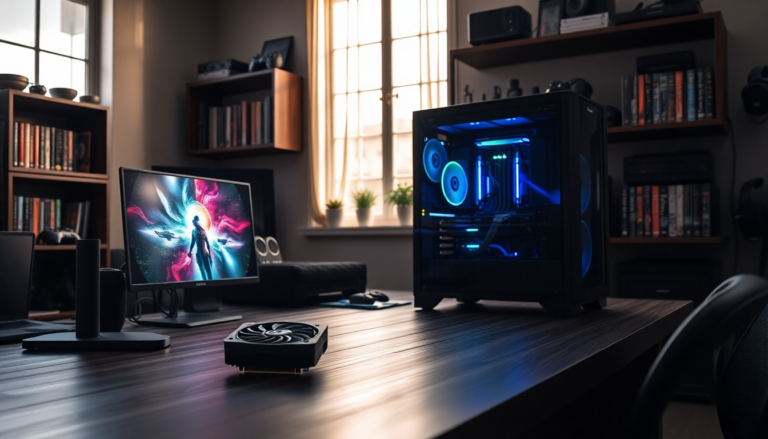Argomenti trattati
In today’s gaming world, snagging a decent graphics card without breaking the bank can feel like an uphill battle. With the recent boom in AI technology and a spike in demand for high-performance chips, the entry-level GPU market is tighter than ever. So, how do enthusiasts and casual gamers alike navigate this tricky landscape? Understanding which budget-friendly graphics cards still pack a punch is crucial. In this article, we’ll take a closer look at some of the top contenders within the $200 range, focusing on their performance, capabilities, and overall value for potential buyers.
Market Overview and Current Trends
The demand for graphics cards has seen a dramatic shift in recent years, largely driven by technological advancements and evolving gamer preferences. These days, most gamers need at least 8GB of VRAM to run modern titles smoothly at 1080p resolution. As game design and mechanics continue to advance, older models quickly become obsolete. On top of that, the ever-changing tariff landscape in the USA is affecting pricing, making it essential for buyers to stay informed.
Recent statistics from top analytics sources reveal that while the supply of budget GPUs has diminished, a few models are still managing to retain their value. The Radeon RX 6600, Intel’s Arc A750, and the GeForce RTX 3050 stand out as some of the few options meeting today’s gaming standards, all while staying within that appealing $200 price range. Each of these cards comes with its own unique strengths and weaknesses, which can significantly impact a buyer’s choice.
Analysis of Leading Budget Graphics Cards
When diving into these graphics cards, it’s essential to focus on performance metrics and how well they align with modern gaming technology. For instance, the Radeon RX 6600 is renowned for its efficient power consumption relative to its performance, though it does fall short in the advanced ray tracing department. On the other hand, Intel’s Arc A750 has made quite a splash, often outperforming rivals in raw frame rates, but its higher power requirements could be a turn-off for gamers using older systems.
Meanwhile, the GeForce RTX 3050 is popular for its DLSS support but tends to struggle in high-demand scenarios, especially with newer titles. Each card has its own merits, but the right choice ultimately hinges on the buyer’s specific gaming needs and hardware setup. For example, the RX 6600 is ideal for gamers looking for solid 1080p performance without hefty power demands, while the A750 may attract those prioritizing frame rates and willing to manage a bit more power consumption.
Investment Considerations and Future Predictions
When it comes to investing in a graphics card today, it’s all about balancing current performance with future-proofing potential. As game requirements keep climbing, that 8GB VRAM ceiling might not hold up for long. Potential buyers should evaluate not only immediate performance but also how long their investment will last in an ever-evolving landscape.
As the market continues to shift, manufacturers are likely to respond to the growing appetite for more powerful yet affordable cards. For those keeping a close eye on their wallets, waiting for new model releases or considering a used card from a trusted source could be a savvy move. This strategy may grant access to advanced technologies at a more manageable price.
Ultimately, the best approach is to align your graphics card choice with your gaming priorities while remaining adaptable in this fast-paced market. By taking a strategic approach to your purchase, gamers can ensure they make a sound investment that enhances their gaming experience without straining their finances.

